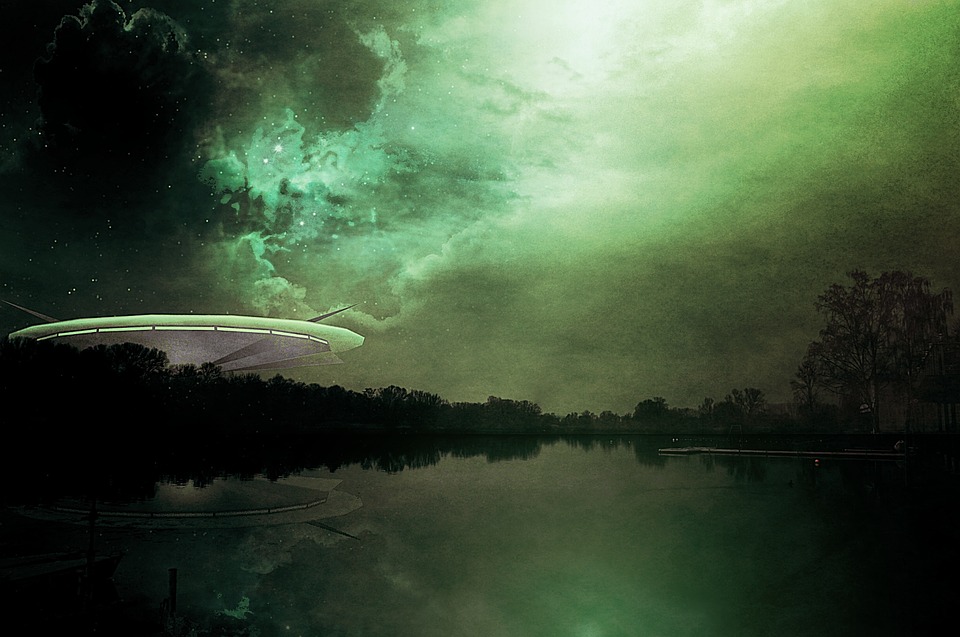One of the biggest mysteries in the world is whether or not there is life beyond Earth or if we are alone in the universe. A recent discovery in a glacier may further add weight to whether there is alien life out there.
Researchers from Montana State University found that there are processes that can support basic forms of life under glaciers. Analyzing data from icy habitats all over the world, the findings show that these processes can help determine the role these organisms have in creating life through time. The researchers believe that a similar process may help support life in planets that may not have the most hospitable of environments.
The study examined how water and microbes interact with the bedrock under the glaciers. The researchers used samples obtained from glacial sites like Canada and Iceland for their study. This was where they found a type of organism also referred to as an extremophile -- organisms that can thrive in extreme conditions such as boiling water, acid, nuclear reactor cores as well as toxic waste.
“We kept finding organisms in these systems that were supported by hydrogen gas,” said Doctoral candidate Eric Dunham of MSU. “It initially didn’t make sense because we couldn’t figure out where that hydrogen gas was coming from under these glaciers.”
The researchers later found how the hydrogen was formed, through physical and chemical processes as the silica-filled bedrock under the glaciers is crushed by the ice into mineral particles. Combining these mineral particles with glacial meltwater, hydrogen is formed and the microbial communities under the ice could harvest the hydrogen gas and combine it with carbon dioxide to produce biomass.
At the same time, NASA has updated amateur alien hunters with more information on the odds of being able to find life outside Earth. Astronomers have usually utilized the Drake equation to determine how many advanced civilizations there may be in the universe. Today, NASA along with researchers from the California Institute of Technology and Santiago High School has given an updated form of the Drake equation for budding astronomers to be able to calculate the odds more accurately.
The updated form makes use of the essential equation but with added factors such as the possibility of species killing each other off and the rate of abiogenesis throughout the universe.



 Trump Administration to Launch Autism Initiatives Targeting Acetaminophen Use and New Treatment Options
Trump Administration to Launch Autism Initiatives Targeting Acetaminophen Use and New Treatment Options  Lab-grown meat: you may find it icky, but it could drive forward medical research
Lab-grown meat: you may find it icky, but it could drive forward medical research  Ancient Mars may have had a carbon cycle − a new study suggests the red planet may have once been warmer, wetter and more favorable for life
Ancient Mars may have had a carbon cycle − a new study suggests the red planet may have once been warmer, wetter and more favorable for life  NASA Partners with Katalyst to Save Swift Observatory with Innovative Docking Mission
NASA Partners with Katalyst to Save Swift Observatory with Innovative Docking Mission  Blue Origin’s New Glenn Achieves Breakthrough Success With First NASA Mission
Blue Origin’s New Glenn Achieves Breakthrough Success With First NASA Mission  FDA Pilot Program Eases Rules for Nicotine Pouch Makers
FDA Pilot Program Eases Rules for Nicotine Pouch Makers  SpaceX’s Starship Completes 11th Test Flight, Paving Way for Moon and Mars Missions
SpaceX’s Starship Completes 11th Test Flight, Paving Way for Moon and Mars Missions  SpaceX Starship Test Flight Reaches New Heights but Ends in Setback
SpaceX Starship Test Flight Reaches New Heights but Ends in Setback  Cogent Biosciences Soars 120% on Breakthrough Phase 3 Results for Bezuclastinib in GIST Treatment
Cogent Biosciences Soars 120% on Breakthrough Phase 3 Results for Bezuclastinib in GIST Treatment  Is space worth the cost? Accounting experts say its value can’t be found in spreadsheets
Is space worth the cost? Accounting experts say its value can’t be found in spreadsheets  Lost in space: MethaneSat failed just as NZ was to take over mission control – here’s what we need to know now
Lost in space: MethaneSat failed just as NZ was to take over mission control – here’s what we need to know now  NASA Astronauts Wilmore and Williams Recover After Boeing Starliner Delay
NASA Astronauts Wilmore and Williams Recover After Boeing Starliner Delay 































